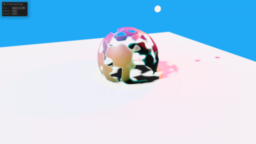- the 4th edition of the Physically Based Rendering has been released to read on the web for free
- the book teaches both the mathematical theory and the practical implementation of a photorealistic rendering

- a brief blog post that describes what advantages Wave intrinsics can have
- advises on group sizes and how they can affect code generation

- the article provides an overview of the way D3D12 deals with resource descriptors
- presents how shaders use the RDNA2 instructions use the descriptor when sampling
- from there, shows how Render/Depth targets are different and only used from the CPU side

- video of the Performance-Aware Programming series that presents in real-world terms latency, throughput, and dependency chains
- aims to develop the intuition of these concepts by explaining the process of doing laundry and showing that the same fundamental ideas apply to accelerate chores

- the video presents an overview of the hardware changes in new Apple hardware generations
- discusses how new hardware features enable better hardware utilization through dynamic shader register usage
- additionally covers the updates to the hardware raytracing capabilities

- the video discusses updates to the profiling capabilities of hardware/software updates
- presents new views that visualize screen space costs and allow better visualization of hardware counters
- explains how the new capabilities allow performance issues to be identified with examples

- the article provides a breakdown of the GPU scene rendering of Cities: Skylines 2
- presents how the scene is drawn and points out performance optimization issues

- the video tutorial presents how to extend the generic bevy rendering material to support custom effects
- shows the process in two examples
- covers the shader changes, how to bind custom data, and how to use the newly defined material

- the video provides an overview of how Ghost of Tsushima rendered grass
- presents the process of implementing the rendering step by step inspired by the technique

- the slides for the advances of rendering presentation have been released
- proposes a novel approach for BRDF authoring against photograph references
- covering how to develop the main character shading model and validate the results
- additionally covers raytracing reflections, transmissions, and related optimizations

Thanks to Giuseppe Modarelli for support of this series.
Would you like to see your name here too? Become a Patreon of this series.